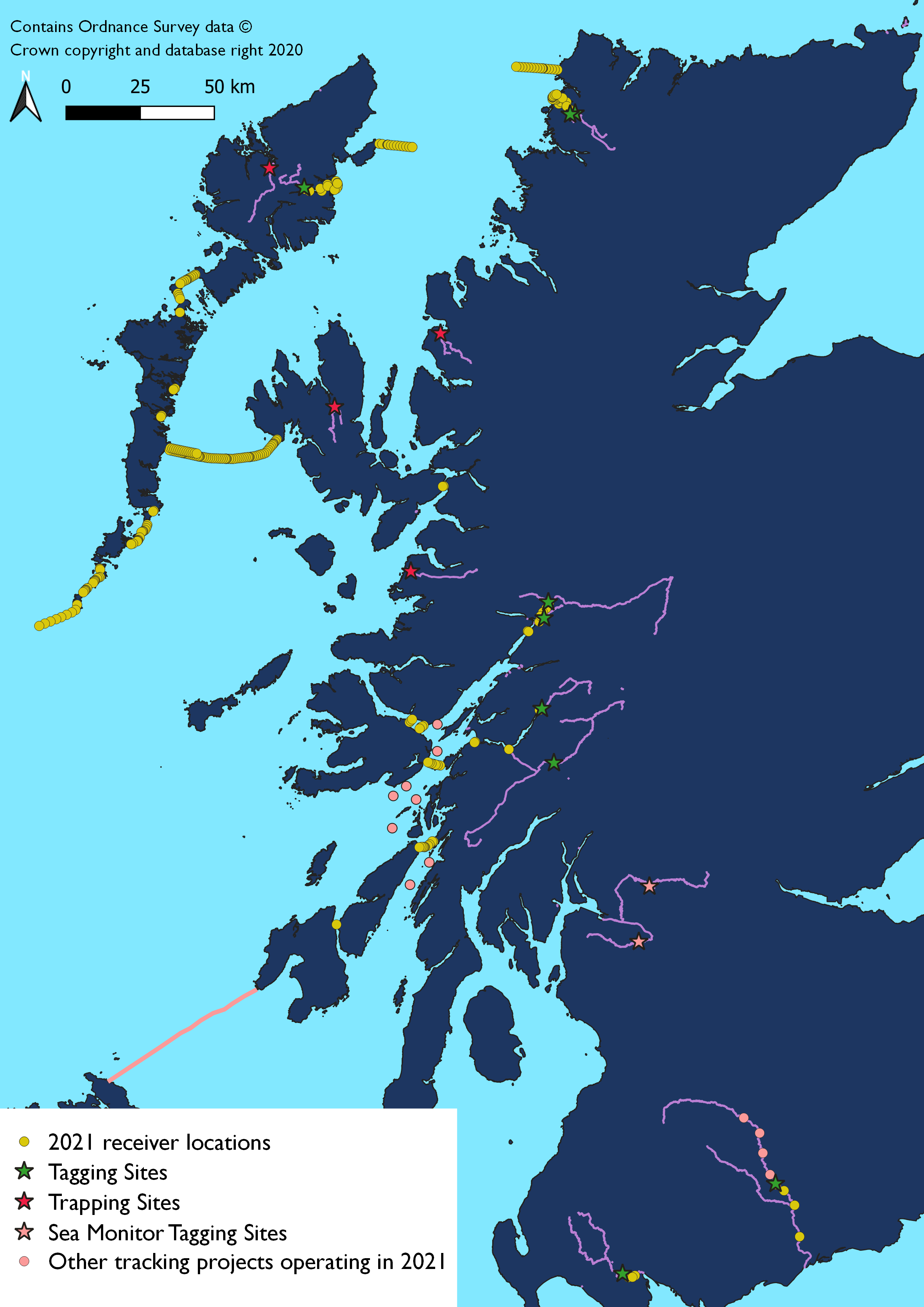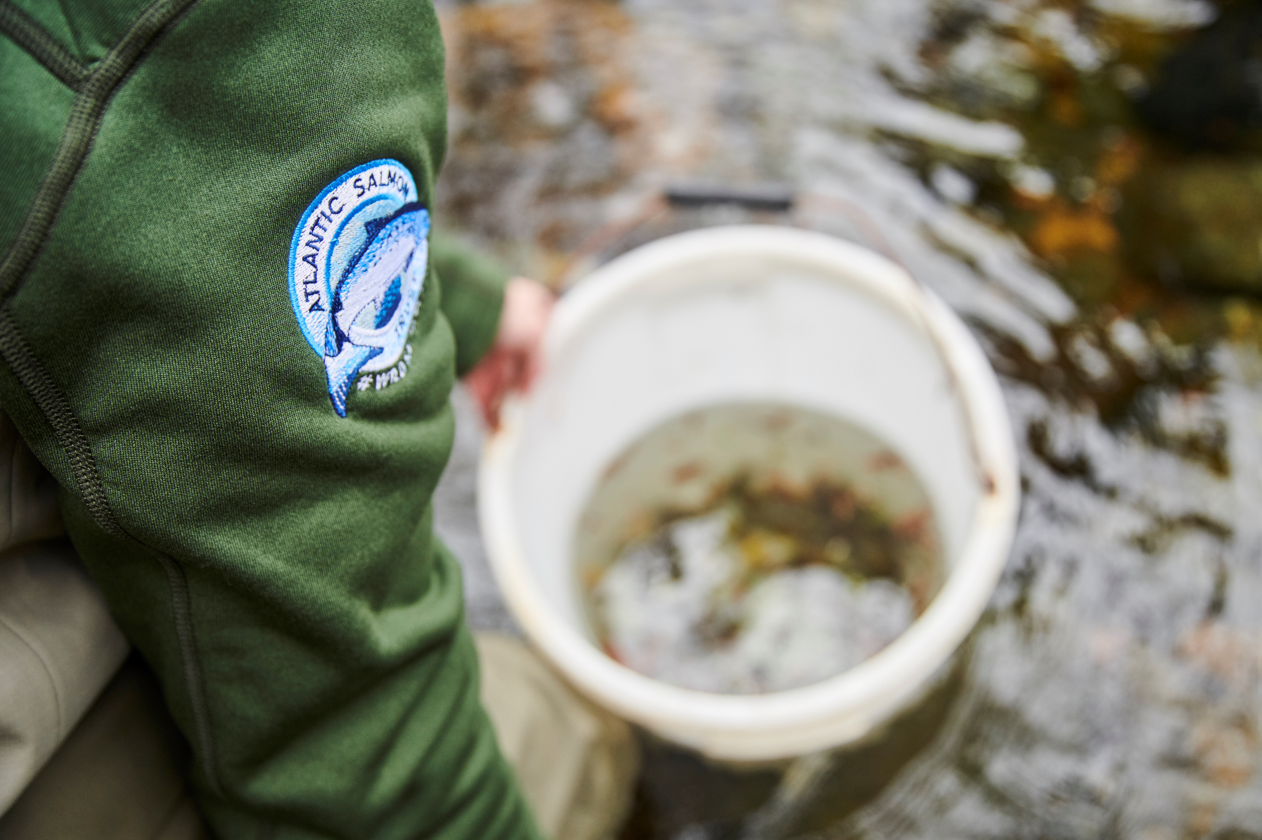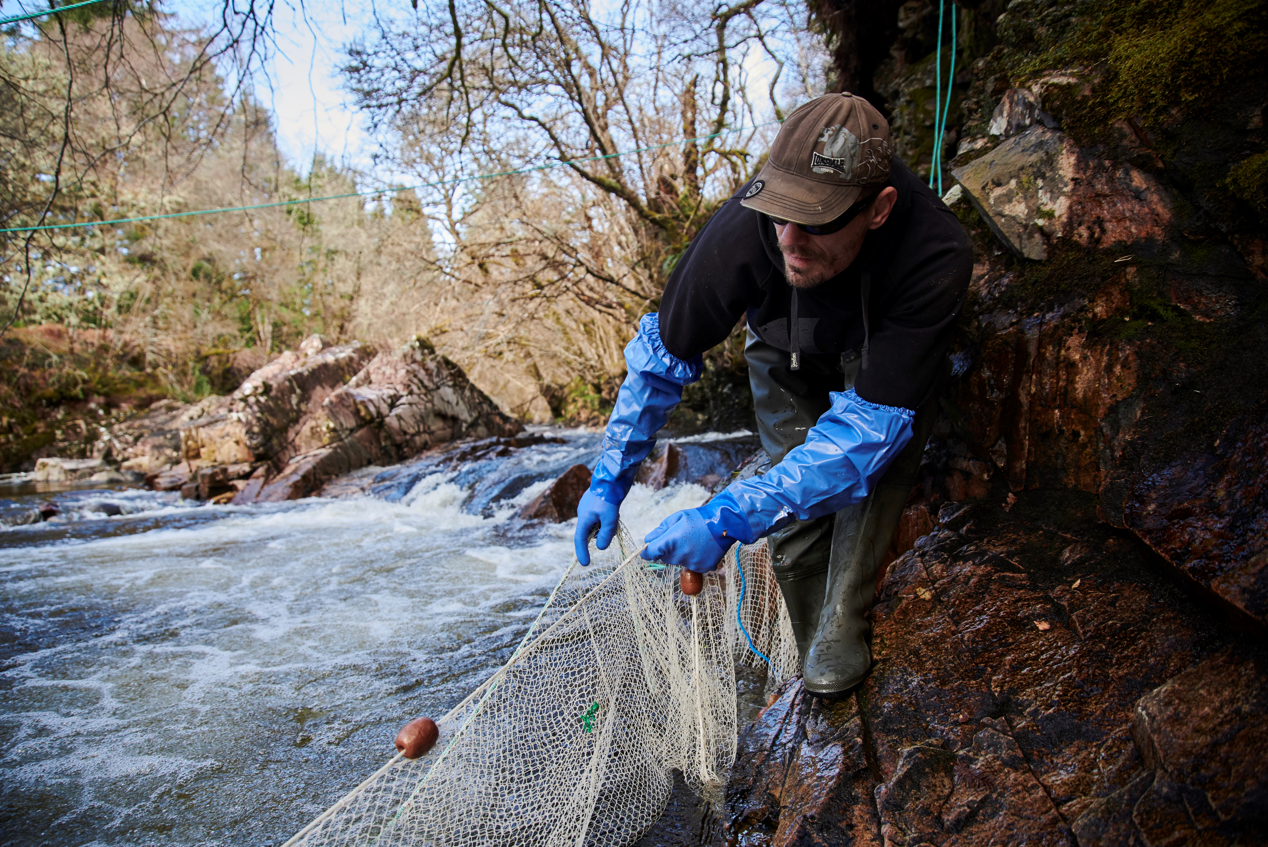
West Coast Tracking Project
Tracking and protecting our wild salmon
The Missing Salmon Alliance is proud to support Atlantic Salmon Trust’s The West Coast Tracking Project, which is a unique study that will advance our understanding of the marine migratory distribution of wild Atlantic salmon across the West Coast of Scotland.
Right now, there is little exact information about our smolts’ swimming behaviour and what happens to young salmon as they journey around our coasts. This presents a number of problems when trying to safeguard this important species. If we do not have detailed knowledge about their migration routes, for example, we cannot make informed decisions to minimise the impact of the dangers they face.
This ambitious work will add to the industries knowledge, tracking wild Atlantic salmon over a three-year period to better understand their migration routes and, ultimately, to provide information on how best to look after them.
The West Coast of Scotland
This insightful project covers a huge geographical area, covering the south of Scotland with Dumfries and Galloway, right up to the North of Scotland and the Outer Hebrides. To carry out this study within the extensive area is a huge undertaking – especially in combination of working through a global pandemic – and all being subject to the extremes of Scottish weather.
Working Together to Save Salmon
MSA Members, Atlantic Salmon Trust and Fisheries Management Scotland, together with Marine Scotland Science are working to improve our knowledge, with the ultimate aim of supporting wild fish populations. The project is governed by a steering group compromising the three partner organisations – ensuring an independent and scientific approach. The planning, design and deployment of equipment for this project is directed, entirely, by the three project partners.
Other Major Initiatives Taking Place
The West Coast Tracking Project will not happen in isolation. There are other major initiatives currently taking place across the UK, such as SeaMonitor and COMPASS, as well as others run by Marine Scotland, NatureScot and the Zoological Society of London. Crucially, the tags and receivers across these projects are all compatible with one another. This means salmon will be detected on all of the arrays, which will lead to a far greater understanding of how these fish are moving out to sea.
Modelling Smolt Migration
The migration of smolts depends on a number of factors, including their swimming behaviour and the ocean currents. These can be combined with scientific models, such as Marine Scotland’s Smolt Migration Model, to make predictions of where the fish go under different conditions. The West Coast Tracking Project is being used to support and strengthen Marine Scotland’s Smolt Migration Model by providing additional information on smolts distribution at sea and finding out more about their likely swimming behaviour.
Together with studies of local movements of smolts through specific sea lochs, this information will ensure that a good understanding of the distributions of salmon smolts is included as part of the marine planning process.
The West Coast Tracking Project: So Far
Earlier this Spring, 24 in-river receivers and 228 marine receivers were deployed from the northwest coast of Scotland, around the Western Isles, all the way down to Dumfries and Galloway. This momentous task could not have happened without the wealth of help & support from our incredible project partners, Boards & Trusts and the determined individuals who dedicated their time to make this project happen.
The in-river receivers were recovered from AST’s project rivers in early summer (June/July), once the smolt run had ended.
The marine receivers were retrieved in August/September, when the AST team returned to sea to collect these canisters of information. The recovery of receivers isn’t a simple task and very much depends on tides, weather and sea conditions.
Atlantic Salmon Trust’s scientific colleagues at the University of Glasgow have started the process of downloading the information they hold and analysing the findings.
Watch Atlantic Salmon Trust’s brand new short film that documents the ground-breaking work carried out in Spring 2021 for Year 1 of the West Coast Tracking Project below.
West Coast Tracking Project Initial Findings and 2022 Activity
This project is starting to indicate migratory patterns and preferences, including how individual smolts move through sea lochs and their speed of travel. The early findings, from the 2021 tracking season, also show that our salmon smolts disperse widely along the west coast and migrate using many different routes. This short animation details initial findings from the project’s first year.
The design for the 2022 project has been shaped and guided by the information we gained from Year 1 of the study. We will be concentrating our efforts closer to shore to get a better understanding of the vital first few days our smolts spend at sea, by investigating their speed and timings through the sea lochs in much greater detail.
Funding the West Coast Tracking Project
The Atlantic Salmon Trust’s project is financially supported by the Scottish Government’s Maritime Fisheries Fund, and significant private and industry contributions – including the aquaculture industry. The project is also supported by voluntary contributions of time and resources across the West Coast of Scotland, and from generous AST donors.
A full financial breakdown of income and expenditure can be viewed here.
All funds contributed to the West Coast Tracking Project are restricted – meaning that they can only be used solely for this project and not for other purposes. There are no contractual arrangements or agreements, formal or informal, with any external members or industries that dictate, influence or restrict the design or results of this study, or the activities of the project partners.






